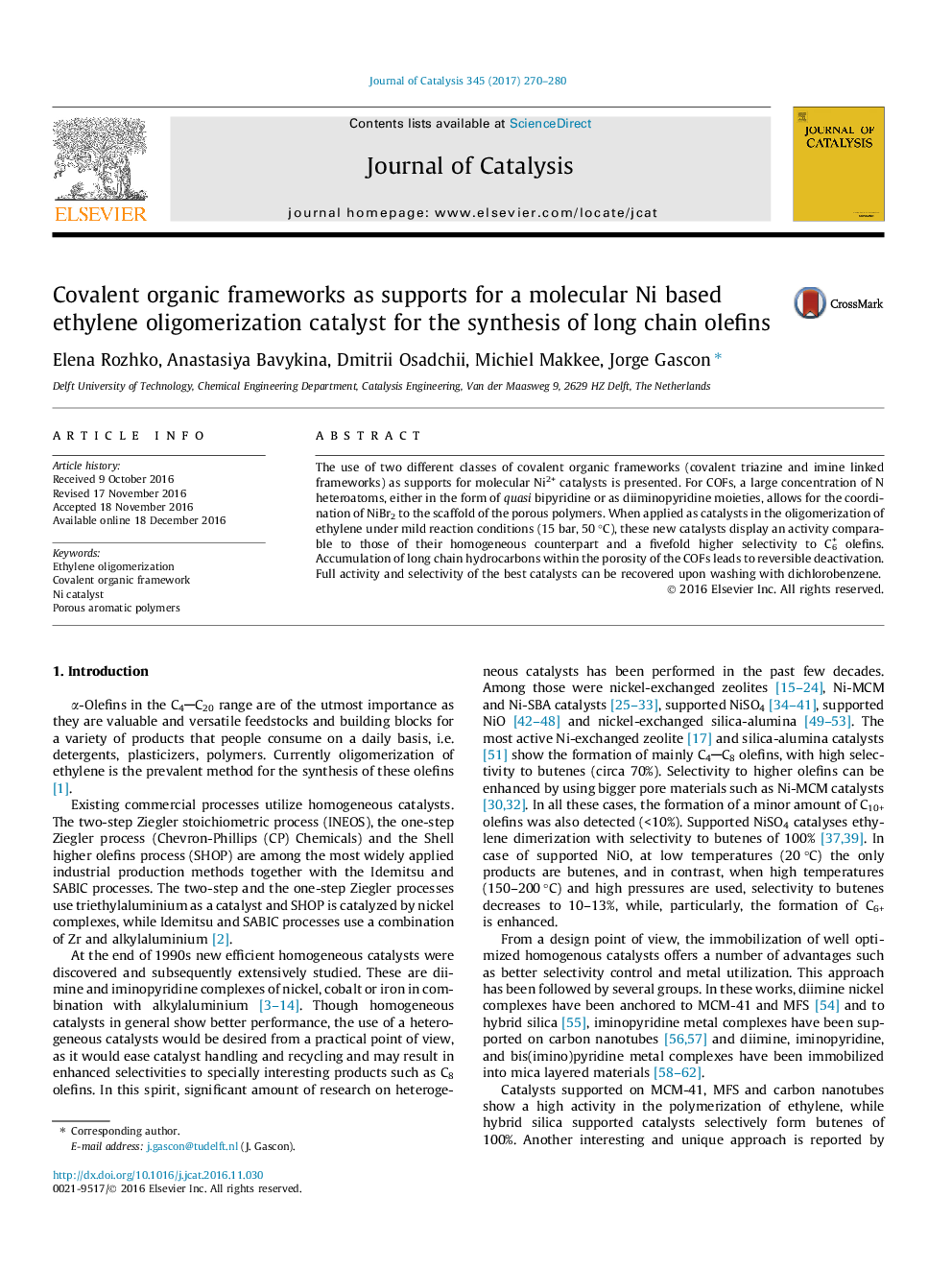| Article ID | Journal | Published Year | Pages | File Type |
|---|---|---|---|---|
| 6455675 | Journal of Catalysis | 2017 | 11 Pages |
â¢Two different families of Covalent Organic Frameworks are used as supports for a molecular Ni catalyst.â¢The resulting catalysts show high selectivity for the formation of C6C20 olefins in the oligomerization of ethylene.â¢Catalytic results are rationalized on the basis of the textural properties of the different COFs.
The use of two different classes of covalent organic frameworks (covalent triazine and imine linked frameworks) as supports for molecular Ni2+ catalysts is presented. For COFs, a large concentration of N heteroatoms, either in the form of quasi bipyridine or as diiminopyridine moieties, allows for the coordination of NiBr2 to the scaffold of the porous polymers. When applied as catalysts in the oligomerization of ethylene under mild reaction conditions (15 bar, 50 °C), these new catalysts display an activity comparable to those of their homogeneous counterpart and a fivefold higher selectivity to C6+ olefins. Accumulation of long chain hydrocarbons within the porosity of the COFs leads to reversible deactivation. Full activity and selectivity of the best catalysts can be recovered upon washing with dichlorobenzene.
Graphical abstractDownload high-res image (69KB)Download full-size image
